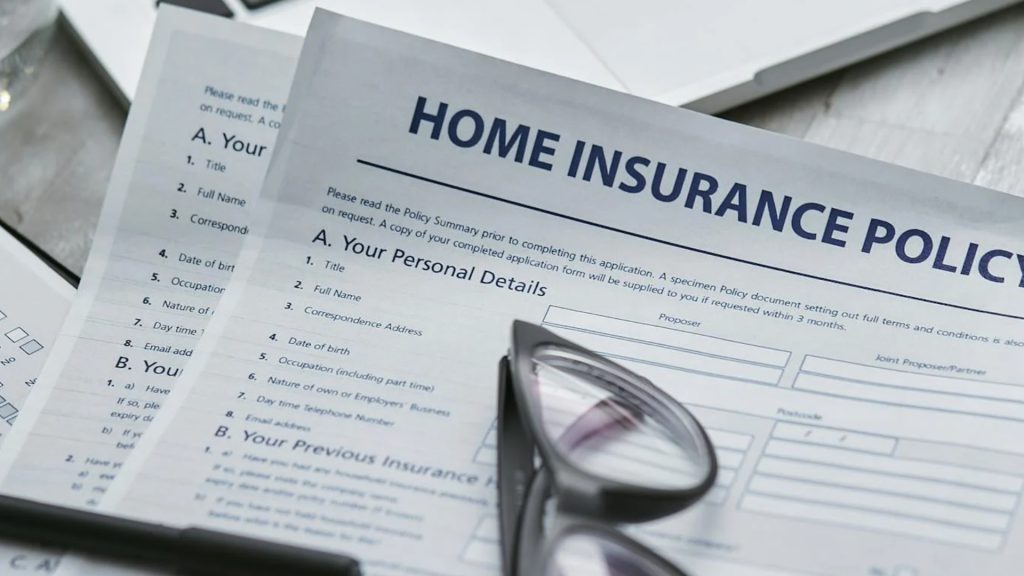Insurance is one of those tricky parts of growing up that only makes sense once you have it. Some types of insurance are mandatory, such as car insurance, and some other insurances are voluntary, such as life insurance.
Insurance is Very Important
Of course, insurance is one of those things that only becomes important if you ever need it. Health insurance is particularly important to have in the case of an emergency, given that medical debt is one of the leading causes of bankruptcies in the United States.

That doesn’t change the fact that, for many Americans, insurance of any kind is a luxury that can be challenging to justify. If your job doesn’t provide medical insurance, it can cost as much as, or more than, a mortgage payment for many Americans to purchase a private plan on the public market, and that is an expense that many Americans can’t swing.
Homeowner’s Insurance is a Tricky Business
Some types of insurance face further challenges than mere expense, though. Homeowners insurance, for instance, is becoming an increasingly challenging issue in the country, with some insurers choosing to stop providing coverage in various states.

The reasoning behind it is simple, if frustrating. Climate change has made extreme weather events such as floods, earthquakes, and wildfires all the more common, and these are events that make insuring a home much riskier. Some companies are choosing to cut their losses, rather than continue to provide coverage in these higher-risk states.
Nuanced in California and Florida
For some states, like California, the issue is even more nuanced. California home insurers are, by law, unable to raise premiums without giving notice to the policy holders, and this law has made it difficult for major insurers to keep their prices in line with the risk to the company.

Other states, though, like Florida, have higher premiums, and the insurance companies are still choosing to leave anyway. Many of these companies have started by stopping new policies from being taken out, and many fear that these companies will eventually drop existing policies together in their journey of risk assessment.
Climate Change is Bad for Business
While it’s a deeply unfortunate pattern that can be seen on the part of insurance companies, it’s an understandable one when looking at it from a business perspective. Climate change has been increasingly problematic since data about global warming first became public in the 70’s, and ignoring the problem has only made it worse.

Corporations and politicians alike have disregarded green energy in favor of fossil fuels and the money that comes from corporate lobbyists, meaning that greenhouse gas emissions are nowhere near the levels they need to be for managing global warming.
Consumers Suffering the Consequences
Because of this short-sightedness in the past, consumers and homeowners are now having to deal with things in the present. Temperatures are getting more and more extreme, making summers hotter and winters more frigid, and Americans are starting to make challenging decisions about where they might want to live.

Because, it must be stated, there are some states and cities that are safer than others in the United States. Nowhere is without any risk, of course; coastal cities could see floods, mountains can see wildfires, and the plains can see tornados. But that doesn’t change the fact that some places are simply less risky than others, as far as climate events go.
Taking the Road of Least Risk
Indeed, the pattern seems to be following that major insurers are looking for the least amount of risk in their policies as well. Where in the past that’s been done through zip code evaluation and lifestyle assessment, there appears to be a new method of risk assessment for insurance companies, which may not be entirely on the up and up.

New reports have come out stating that some US insurance companies are relying on aerial photos from drones to assess risk of properties, and to deny or approve claims. This comes as major insurers like Allstate and State Farm have largely pulled out of the coastal states for home insurance, and people are struggling to find companies that will provide coverage.
Using Drones to Observe Americans
As far as observing wide swaths of land and different kinds of people, using drones is a fairly innovative solution. The amount of manpower that would be necessary to keep track of the 144 million homes that existed in America as of 2022 would be astronomical, which is why these companies have come up with another solution.

Geospatial Insurance Consortium is a company whose entire purpose is to survey Americans, and help various insurance companies make risk assessments and analyze data. They boast that the firm’s kit can provide “stunningly clear imagery” and can even provide “post-catastrophic imagery” for areas impacted by natural disasters.
Evaluating Using AI
Artificial intelligence is a big part of GIC’s services. The business doesn’t emphasize its usage of AI broadly, but it does brag about its partnership with Vexcel, a company that has gone out of its way to boast about its AI-based analysis of aerial imagery.

This is a deeply concerning development. Many Americans deeply value their privacy, and private drones canvassing the US is a huge violation. There’s a bigger problem for Americans, though, which comes in the form of the accuracy of the photographs provided to GIC.
An Example Out of California
The Wall Street Journal cited the case of California resident Cindy Picos when discussing the issue. Picos was dropped by her provider, CSAA Insurance, based on an aerial photograph that allegedly showed that her roof was on its last legs.

However, an in-person inspection found that the photograph was wrong. It was estimated that the roof would last for another ten years before it needed to be replaced, but CSAA Insurance wouldn’t change their mind and revoke the decision to cancel Picos’ insurance policy.
A Growing Problem in the United States
This is evidently a growing problem in the insurance industry. Nichole Brink, a worker in the industry, said that her former employer, Farmers Insurance, used aerial photos to drop claims for nearly any reason. Some of the reasons that she cited were moss on the side of houses to tree branches that seemed to hang over roofs.

Even more concerning than the blatant dropping of claims is the fact that some of the photos that were used to make these judgements were over two years old. Brink said that Farmers Insurance would drop policies based on the old photos, leaving former policyholders out in the cold without coverage.
A Problem with Modern Insurance
This pattern of using AI and images to make decisions about people’s lives and homes showcases a troubling pattern in modern insurance. The goal seems to be to process applications and renewals as inexpensively as possible, and in pursuit of that goal, companies are getting invasive, and inaccurate.

It’s true that in-person inspections of homes aren’t perfect. No inspector is going to catch every risk, but seeing a home with their own eyes is certainly better than trying to make an assessment based on a photo that may not even be up to date.
Privacy Concerns All Around
Additionally, the privacy concerns that can come from both the use of AI and the drone photos combined are staggering. AI is currently being heavily scrutinized for using photos and art to train their systems without permission of the rightful owners, and using the photos of people’s real homes seems to be a deeply concerning combination of these problems.

Indeed, it almost seems that the goal of insurance companies is to have an excuse to be able to drop as many people as possible from their policies. Fewer customers means less money coming in every month, it’s true, but from the perspective of these companies, it also means less risk for potentially very pricey repairs when disaster strikes.
Stuck Between a Rock and a Hard Place
Americans seem to be stuck between an unfortunate rock and a hard place when it comes to home insurance. Moving to safer areas is unattainable for many people, but it’s becoming more and more difficult to find home insurers in many desirable areas of the country.

Some states are working to change their policies to make it friendlier for insurance companies to stay and provide coverage. Until politicians start to take climate change seriously, though, any laws that could be implemented by a local government is a Band-aid on the issue, at best.






